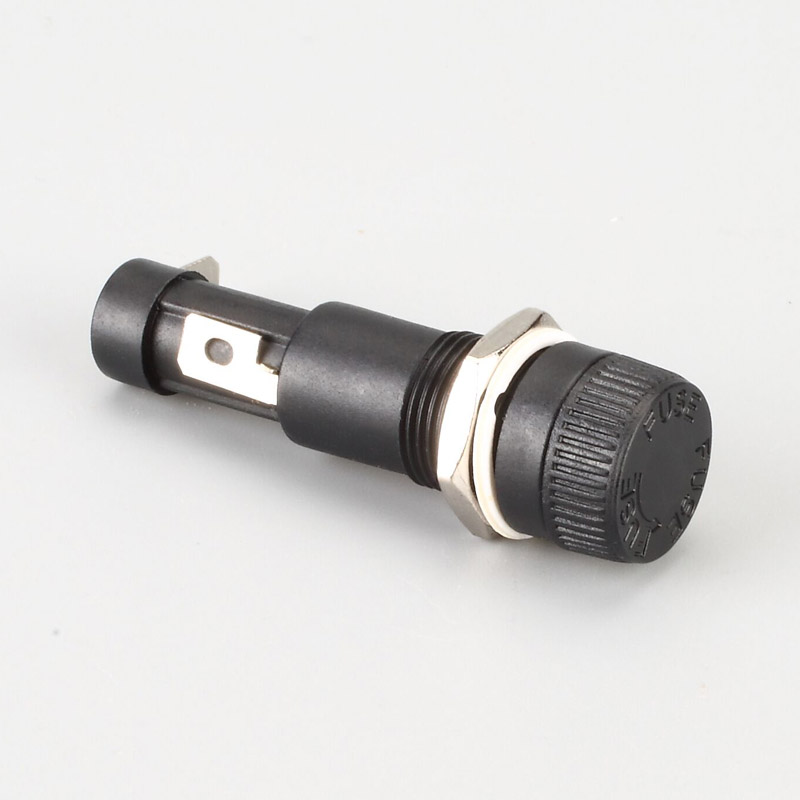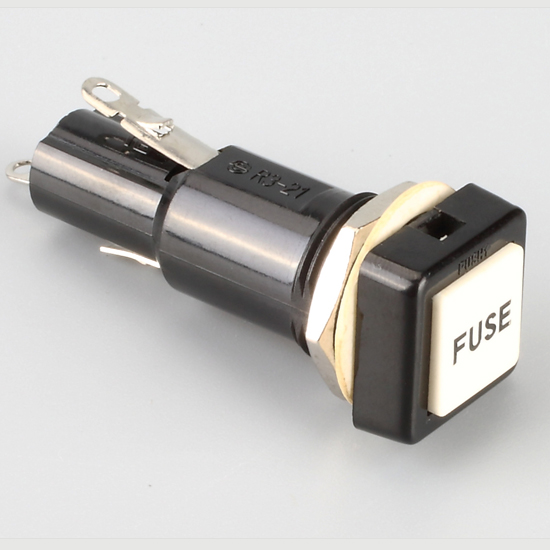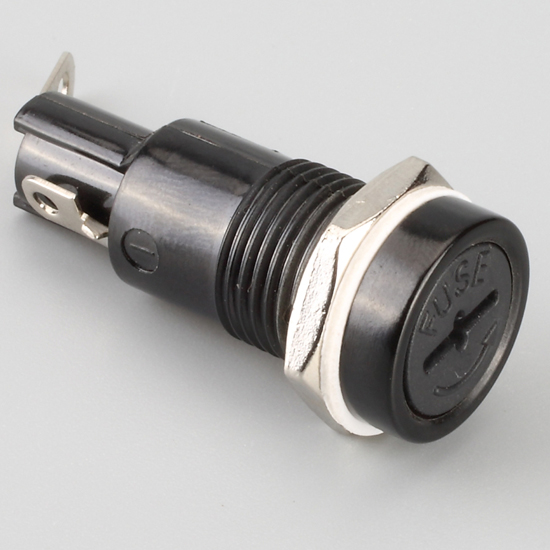Fuse holder manufacturer
In the choice of fuse is to believe that everyone is very headache, this is because there is no good guidance;The HINEW panel mount fuse holder manufacturers will fuse selection involved in the factors listed, we can choose the most suitable fuse according to these ideas.
1. Normal working current: the reliable working current of the fuse at 25C is usually 75% of the rated current to avoid failure.Example: in a 25C environment, it is generally not recommended to use a fuse rated at 10 amps above 7.5 amps.
2. Application voltage (ac or dc) : the rated voltage of the fuse must be equal to or greater than the voltage of the application circuit.
3. Ambient temperature: the higher the ambient temperature, the hotter the fuse and the shorter the service life.Conversely, working at lower temperatures can extend the service life of the fuse.The fuse also gets hotter when the normal working current approaches or exceeds its rating.
4. Overload current: it defines the current that the circuit needs to be protected in case of failure.The fault can be current, or current and the maximum failure time that can be sustained before damage occurs.In fuse and circuit matching, the time-current curve should be considered, but remember that the curve is based on average data.
5. Maximum fault current: the fusing current rating of the fuse must meet or exceed the maximum fault current of the circuit.
6. Pulse (current mutation, surge current, start current, and circuit transient) : pulse conditions may vary greatly in different applications.Different fuse structures may not respond equally to a given impulse condition.The thermal cycling caused by electrical pulses and possible mechanical fatigue can affect the service life of the fuse.The initial pulse or start pulse is normal for some applications where the fuse is selected to include a thermal delay design to maintain the normal start pulse and still provide protection during prolonged overloads.For this choice of fuse for the start pulse, we should refer to and compare the time current curve of the fuse with the I2t rating.
7. Physical size restrictions: for information on fuse length, diameter and height, please refer to the manufacturer's data manual.
8. Institutional approval required: refer to the manufacturer's data manual for information about institutional approval for specific equipment, such as UL, CS Ann, VDE, METI or MITI.Military requirements require special consideration.
9. Fuse characteristics: please refer to the manufacturer's data manual to understand the installation type/size, disassembly, axial lead, visual indication and other information.
10. Characteristics and reevaluation of fuse holder: please refer to the manufacturer's data manual for information on clamps, mounting blocks, panel mounting, PCB mounting, RFI shielding, etc.
11. Apply test and verification before production: verify the selection by requesting samples to be tested in the actual circuit.Before evaluating the sample, ensure that the fuse has good electrical connections and that the cable connections used are suitable.The test shall include life testing under normal conditions and overload testing under fault conditions to ensure that the fuse works properly in the circuit.
You May Like
Install video
Post time: Dec-31-2019



